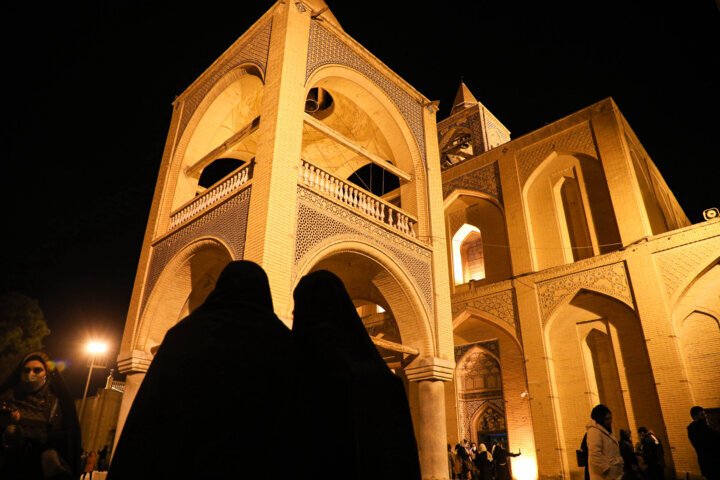Centuries-old cathedral suffers slight damage after torrential rain

TEHRAN – Parts of the wall of Vank Cathedral, a centuries-old travel destination in Isfahan, have slightly collapsed after torrential rain hit the central Iranian city.
Following continuous rains of the past two days, some outer layers of the south wall of Vank Cathedral collapsed, but interior decorations were not damaged, the director of the historical site said on Thursday.
“The thatched facade of the south wall of the cathedral has fallen and we will do the repairs as soon as the moisture dries up.” Aris Davotian said.
Vank Cathedral has extensive gorgeous murals, and due to the stretching of the outer walls, there is a possibility of damage to its treasured decorations, IRNA reported.
Located in the New Jolfa district of Isfahan, the place of worship (locally called Kelisa-ye Vank) is widely referred to as an everlasting masterpiece of architecture.
The vast cathedral harmoniously blends Islamic motifs and elements with those of Armenians. Vank means “monastery” or “convent” in the Armenian language.
Constructed in the first half of the 17th century, with the encouragement of the Safavid rulers, Kelisa-ye Vank is a historic focal point of the Armenian Church in Iran.
It comprises a domed sanctuary, much like an Iranian mosque, but with the significant addition of a semi-octagonal apse and raised chancel usually seen in western churches.
Its sumptuous interior is richly ornamented with restored wall paintings full of life and color, including gruesome martyrdoms and pantomime demons. The ceiling above the entrance is painted with delicate floral motifs in the style of Persian miniature.
The cathedral’s exteriors are in relatively modern brickwork and are exceptionally plain compared to its elaborately decorated interior.
There is also a museum exhibiting a fabulous collection of illustrated gospels and Bibles, some dating back as far as the 10th century.
Hundreds of Armenians, who migrated to Isfahan during the Ottoman–Safavid War (1603–18), contributed to the cathedral being completed.
Some say that the varying fortunes and independence of this suburb across the Zayande River and its eclectic mix of European missionaries, mercenaries, and travelers can be traced almost chronologically in the cathedral’s combination of building styles and contrasts in its external and internal architectural treatment.
The Armenian quarter of Isfahan dates from the time of Shah Abbas I, who transported a colony of Christians from the town of Jolfa (now on Iran’s northern border) en masse, and named the village ‘New Jolfa’. Shah Abbas sought their skills as merchants, entrepreneurs, and artists and he ensured that their religious freedom was respected – albeit at a distance from the city’s Islamic center. At one time over 42,000 Armenian Christians reportedly lived here.
Isfahan is Iran’s top tourist destination for good reasons. Its profusion of tree-lined boulevards, Persian gardens, and important Islamic buildings gives it a visual appeal unmatched by any other Iranian city, and the many artisans working here underpin its reputation as a living museum of traditional culture.
AFM
Leave a Comment